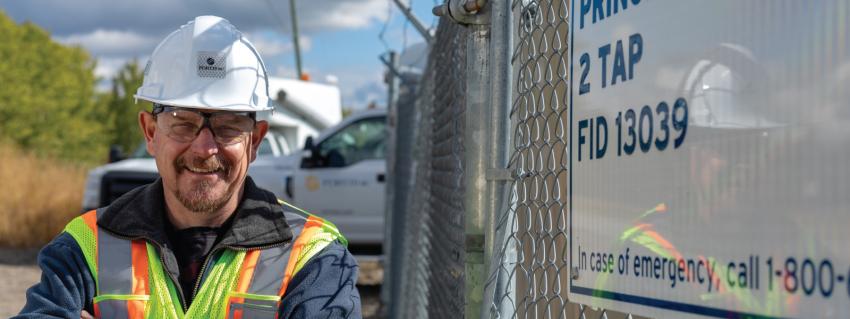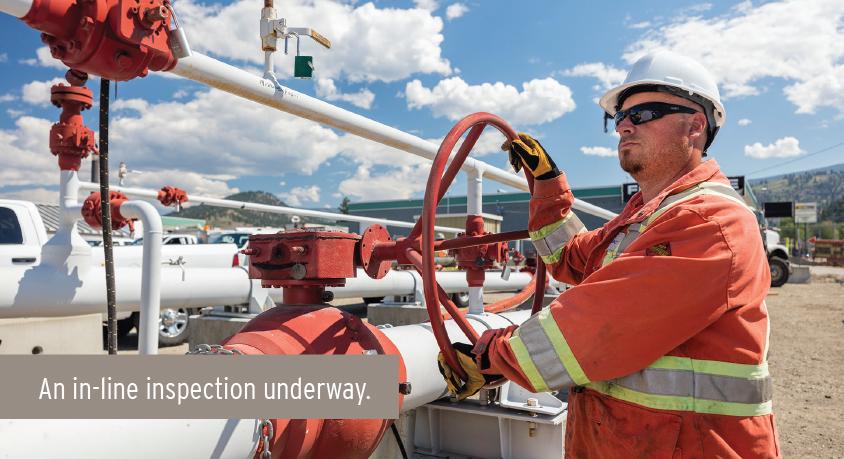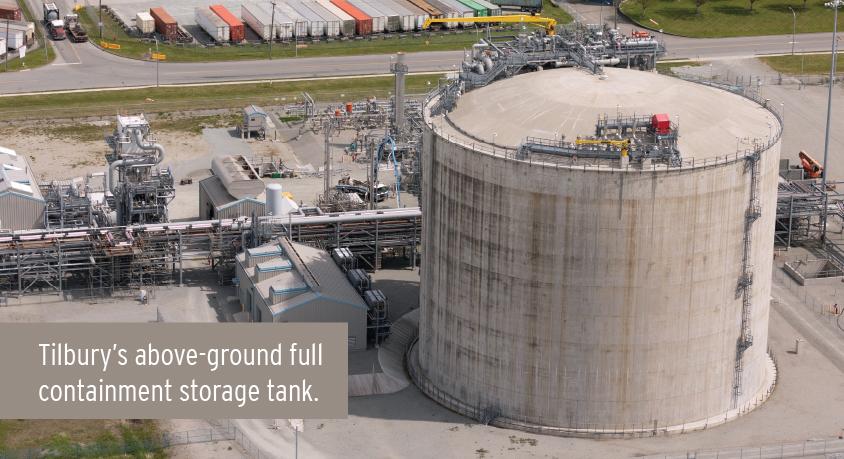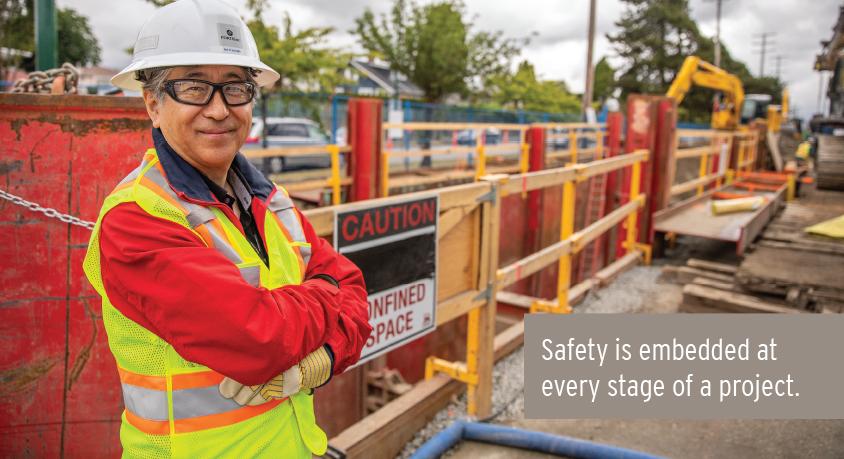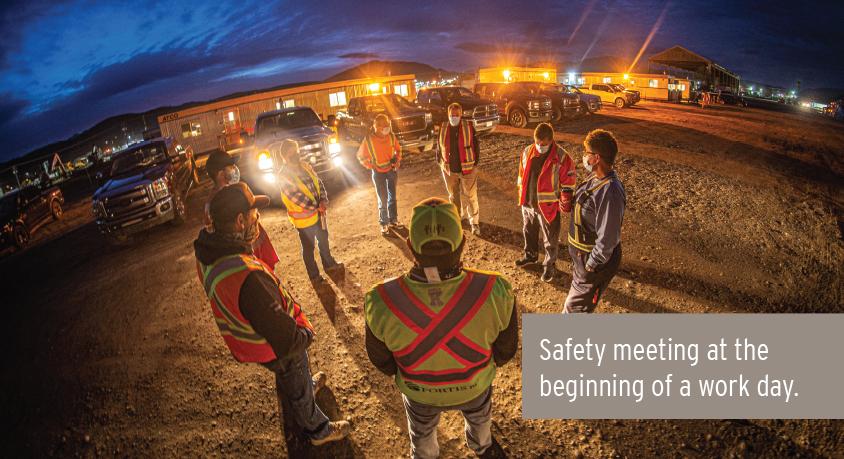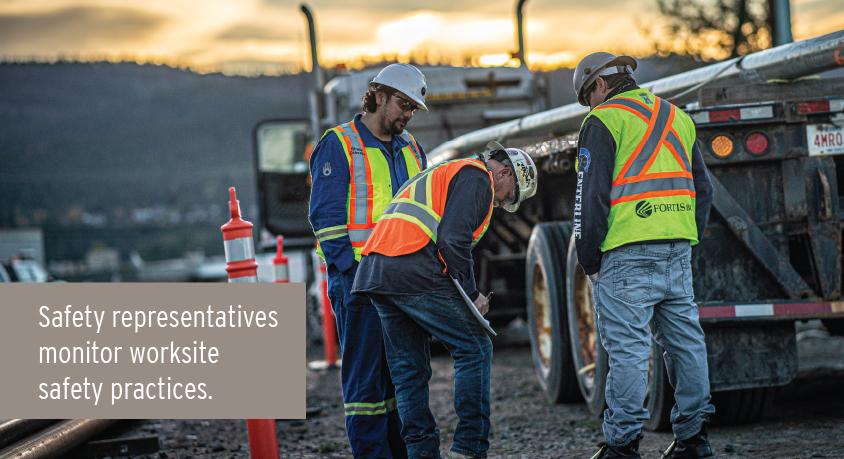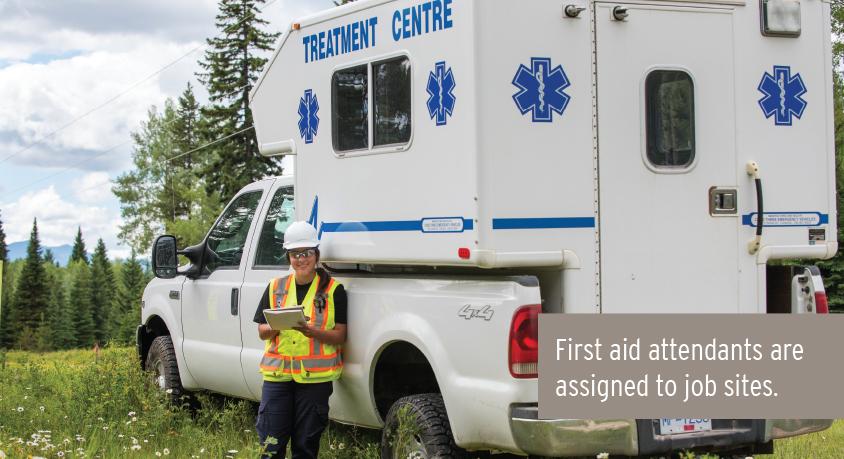Safety begins in the planning stages
When it comes to our major projects, safety is embedded at every stage. We're able to incorporate safety starting in the early planning stages of a project because we assemble a project team that’s as committed to project safety as we are.
When planning was underway for the FortisBC Gas Line Upgrades, only companies with the most robust safety plans were considered. One of the project team’s first tasks was to select the safest route for the 20-kilometre project.
Major east-west arterial routes in Vancouver and Burnaby were chosen instead of side streets. To increase workspace—and safety for the public and our crews—lane closures were necessary on Lougheed Highway in Burnaby in August 2019 and a full closure of East 1st Avenue between Clark Drive and Nanaimo Street in Vancouver was implemented during the summer. The team was also responsible for the selection of which gas line construction methods would be appropriate for work on a construction project in an urban setting.
Detailed planning for lane and road closures during construction and raising awareness of the upcoming closures—through the media, ads, letter drops and signage—were important components of the overall project safety plan.
Safety during construction
Throughout construction, safety experts regularly visit worksites to ensure safety practices are followed. They look at everything from potential tripping hazards, to working in confined spaces, to the proper use of spotters for vehicles.
ProActive Safety & First Aid is one of the companies we contracted to provide safety services on the Inland Gas Upgrades (IGU) project. In addition to providing National Construction Safety Officer certified safety officers to monitor on-site safety and help prevent accidents, the company also provided qualified medics, who have their Occupational First Aid Level 3 -certification to provide first-aid in the event someone should become injured on the job.
Project work sites, such as those on the IGU project, can often be located in remote areas, a long way from a hospital. Enlisting the services of a professional safety company to provide first-aid is essential to ensuring the safety of our workers on site. In addition, there’s always an emergency response plan in place to transport injured workers to the next level of care, if required.
Safety at our Tilbury facility
Our Tilbury liquefied natural gas (LNG) facility in Delta, BC, has been operating safely for more than 50 years.
FortisBC’s LNG facilities are built to meet or exceed government and industry codes and standards to ensure the safety of the public and our employees throughout the life of the facility. For example, our 2018 expansion at the Tilbury LNG facility was done with an eye to the potential risks from seismic events like earthquakes and floods. The expansion included construction of an above-ground full containment storage tank that has become an industry standard.
Learn more about LNG safety and our Tilbury facility.
Ongoing gas line integrity management
Making sure our gas lines continue to operate safely is more than a full-time job. We have a robust integrity management program that includes monitoring our transmission system 24-hours a day, 365 days a year. Regular gas line monitoring involves inspecting the lines in a variety of ways:
- Helicopter flyovers allow crews to inspect hundreds of kilometres of gas line in very rugged and, in some cases, inaccessible terrain. Flying over the gas lines helps crews spot geological, hydrological or third-party activity that could potentially damage a gas line.
- Crews conduct regular ground patrols of transmission lines to check for unusual activity, look for, and assess potential damage and ensure depth of cover is maintained to protect the lines.
- In-line inspection tools are used to gather detailed information about the condition of gas lines that can help us proactively plan maintenance activities. These tools travel inside gas lines and transmit information that can confirm the integrity of the line, or alert crews to a potential anomaly that needs closer inspection. Some of the work that’s currently underway on the IGU project, and the planned transmission system upgrades projects (Coastal Transmission System Upgrades and Interior Transmission System Upgrades), will allow the use of in-line inspection tools to enhance our ability to monitor the condition of these lines.
- To facilitate a more hands-on visual inspection of a particular section of gas line, crews will conduct an integrity dig. This involves excavating small sections of the line to verify its integrity. If an anomaly is observed during the inspection, it's repaired and the gas line is recoated with a high-performance coating before it's reburied.
